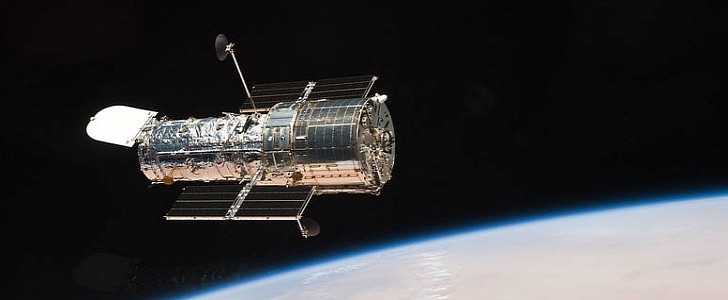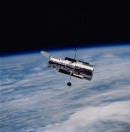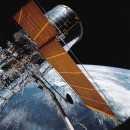NASA's Hubble space telescope has been floating above our heads, at a 340 miles (547 km) altitude peering into the deep space for more than three decades – and it's starting to show its age. The telescope has suspended its science operations as several glitches have sent it into safe mode for the second time this year.
This April, NASA's Hubble telescope celebrated its 31st anniversary in space. Theoretically, the machine could operate for another two decades into Earth's orbit, but it has been facing more and more technical challenges these recent years.
On October 23rd, Hubble's science instruments suffered from "loss of a specific synchronization message." This message usually provides the instruments the temporal information they need in order to respond to data requests and commands accurately.
Then, two days later, the telescope's instruments encountered another glitch. This time, the error displayed multiple losses of synchronization messages, causing Hubble to automatically go into safe mode and suspend its operations.
NASA says that its instruments are in good shape, but after 10 days, it still hasn't figured out the problem. And it looks like we've going to have to wait another week for an update. To better understand the synchronization issue and how to address it, the agency is currently assessing spacecraft data and system diagrams. It's also working on collecting more data from the telescope.
This is the second time Hubble is facing challenges. Earlier this year, it encountered a computer glitch that made it go into safe mode for more than a month.
NASA hopes that its telescope will be back online in order to be joined by the James Webb Space Telescope (JWST) in space. Unlike its 30-year-old cousin, Webb will orbit Earth at a greater distance (about 930,000 miles/1,500,000 kilometers), and it will be more powerful. It will have enhanced infrared resolution and sensitivity, allowing the space agency to observe the universe's furthest objects.
On October 23rd, Hubble's science instruments suffered from "loss of a specific synchronization message." This message usually provides the instruments the temporal information they need in order to respond to data requests and commands accurately.
Then, two days later, the telescope's instruments encountered another glitch. This time, the error displayed multiple losses of synchronization messages, causing Hubble to automatically go into safe mode and suspend its operations.
NASA says that its instruments are in good shape, but after 10 days, it still hasn't figured out the problem. And it looks like we've going to have to wait another week for an update. To better understand the synchronization issue and how to address it, the agency is currently assessing spacecraft data and system diagrams. It's also working on collecting more data from the telescope.
This is the second time Hubble is facing challenges. Earlier this year, it encountered a computer glitch that made it go into safe mode for more than a month.
NASA hopes that its telescope will be back online in order to be joined by the James Webb Space Telescope (JWST) in space. Unlike its 30-year-old cousin, Webb will orbit Earth at a greater distance (about 930,000 miles/1,500,000 kilometers), and it will be more powerful. It will have enhanced infrared resolution and sensitivity, allowing the space agency to observe the universe's furthest objects.







